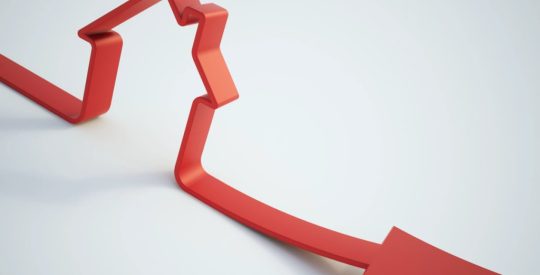A look at stories across HousingWire’s weekend desk, with more coverage to come on bigger issues during this July 4 week:
The state of California is quickly become the nation’s hotspot for housing battles. Two major issues happening right now may change the landscape of mortgage markets in the Golden State.
Nearly 20 financial services trade groups issued a joint letter late last week protesting a proposal in San Bernardino, Calif. to use eminent domain to seize mortgages from private investors.
They say the program would result in massive prepayment risk for mortgage-backed security holders and impose losses on whoever holds the credit risk on the mortgages.
“Our expectation is that the market would demand a much higher risk premium going forward if eminent domain catches on as one would now have to assume that there is massive prepayment risk whenever a loan is underwater,” the letter states. “That means higher mortgage interest rates.”
Opponents of the idea feel down payment requirements would rise as lenders would want to ensure there is little risk that a loan results in negative equity and is thus subject to eminent domain.
The idea is in an exploratory stage at this point. Along with two other counties in California, San Bernardino recently created the Joint Powers Authority to consider ideas brought forth. The JPA will have its first meeting in late July and then issue a request for proposal in August for ideas on how to erase some of the negative equity in the area.
A new study just released by industry groups, authored by research and consulting firm Beacon Economics, concludes that if the Homeowner Bill of Rights were to be signed into law they will ultimately harm the vast majority of California homeowners.
Two central provisions of the Bill of Rights passed through a conference committee last week, sending the bills to expected votes early this week in the state assembly and senate. If the provisions are approved, they’ll go to the governor’s desk for signing or veto.
The bills impose stricter rules on mortgage servicers seeking to non-judicially foreclose on homes with mortgages in default and expose mortgage servicers to substantial new legal liability. These rules, Beacon says, have the effect of slowing the foreclosure process and increasing fines on mortgage servicers for various transgressions within the foreclosure process.
Beacon concludes that the bills would reduce home values as a result. Housing markets with longer length foreclosures see greater discounts on foreclosed units when mortgage servicers eventually sell them — relative to non-distressed transactions. These discounts, Beacon says, pull the whole market down with them.
The research and consulting firm also argues that the bills could add to the financial burden of distressed homeowners: “The non-judicial foreclosure process is more efficient compared to the judicial foreclosure process, and it comes with an important caveat: when using non-judicial foreclosure, lenders…cannot seek compensation for their mortgage losses out of the borrower’s other assets. If the non-judicial route is lengthened and made more costly, many lenders may decide to pursue a judicial foreclosure…and thus pursue remedies like deficiency judgments, ultimately costing the borrower more in the long run.”
Based on their belief that the nation’s homeownership rate will ultimately stabilize around 64%, analysts at Bank of America Merrill Lynch (BAC) forecast single-family housing starts will normalize at 900,000 per year and multifamily starts at 600,000 (click on chart below).
And since a typical demolition rate is 300,000 to 400,000 per year, about 1.2 million households will form, they conclude.
New home sales increased 7.6% in May, which, combined with low inventory, caused supply to tumble to 4.7 months, the lowest since October 2005. Existing home sales fell 1.5% in May, following a 3.4% gain in April.
“As we have been arguing, it is clear that the housing market has bottomed,” BofAML analysts say. “But we still stress that reaching a bottom is very different from starting a robust recovery. The return to a normal housing market will be slow.”
However, before returning to this near-term equilibrium, they say new home sales and starts will temporarily overshoot. Plugging in BofAML’s forecast for household formation to return to 1.2 million within the next four years implies single-family sales could touch 750,000 before normalizing. And adding back the residual for starts built by owner, single-family starts could temporarily exceed 1.1 million.
“The stage is set for recovery, but the scars from this housing cycle are deep,” the analysts say.
Commercial and multifamily mortgage originations in the first quarter grew 36% over year-ago levels. The elevation includes a 45% rise in loans for multifamily properties, according to the Mortgage Bankers Association.
Originations fell compared to the fourth quarter of 2011, reflecting the industry’s usual push to finalize deals before the end of the year and subsequent drop-offs in first quarter numbers.
Commercial and multifamily mortgage debt outstanding increased by $8.1 billion, or 0.3%, in the first quarter of 2012, with agency portfolios and MBS, life insurance companies, banks and thrifts all increasing their holdings. Commercial mortgage-backed securities trusts experienced a decline.
Multifamily mortgage debt outstanding rose $6.9 billion, or 0.8%, to $818 billion from the fourth quarter of 2011, the MBA reports.
Delinquency rates for commercial and multifamily mortgages fell during the quarter for banks, life insurance companies and Fannie Mae, but rose for CMBS and Freddie Mac during the first quarter.
And finally, the Federal Deposit Insurance Corp. did not report any new bank closings for the week ending June 29.
So far 31 banks have closed in 2012. This time last year, the FDIC reported 48 bank closings.




